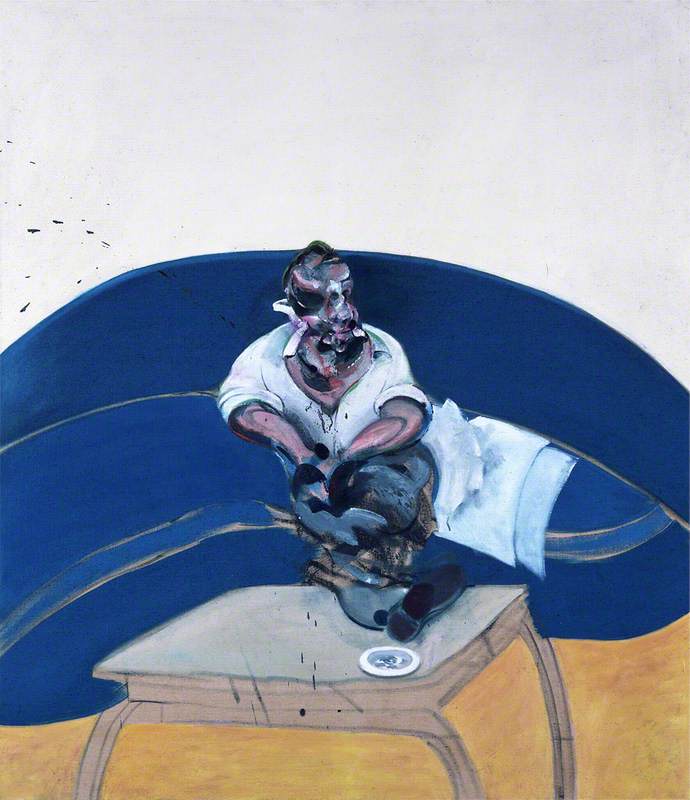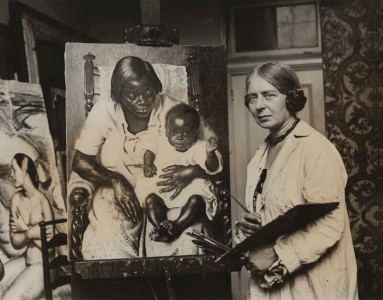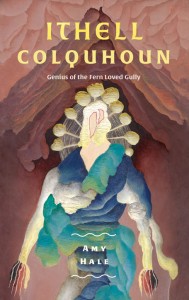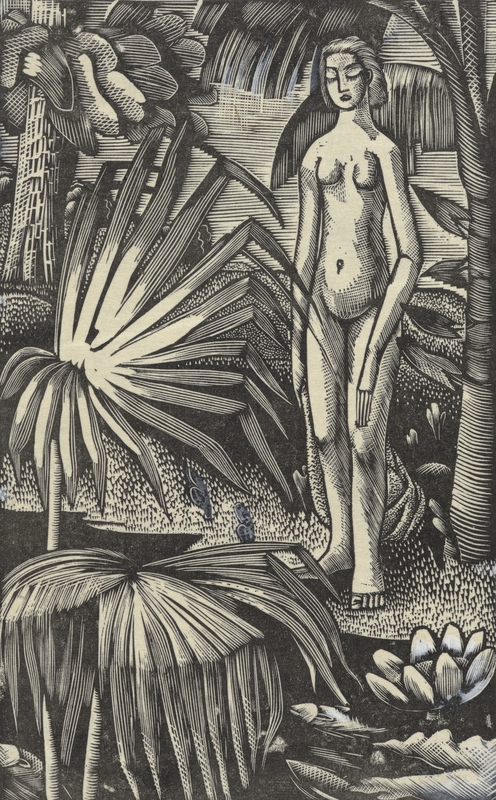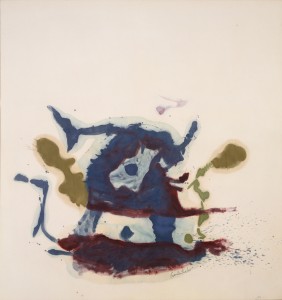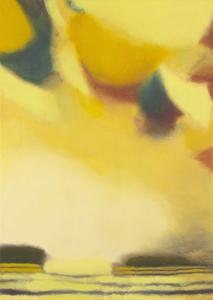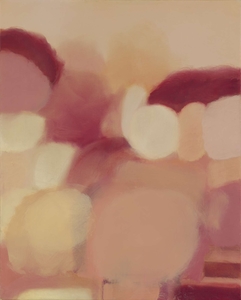Phoebe Unwin's haunting paintings are strangely familiar. Looking at her portraits landscapes and amorphous structures, I know I have seen them somewhere before. Not in another painting but in life. It is on the tip of my tongue.
It is her ability to conjure a sense of the familiar in the unfamiliar that catches the critics' attention. At only 41, Unwin has already had solo exhibitions at the Towner Gallery in Eastbourne and Collezione Maramotti in Italy after she was shortlisted for the Max Mara Art Prize in 2015. She fluidly oscillates between opposites with purpose. It is why she mixes figuration and abstraction.
These inherent dichotomies in her work pull the viewer in, but also keep us out. Like a great secret, both repulsive and magnetic, Unwin's works are exciting and enigmatic.
It is that mystery that has the potential to pull someone in. A mystery has to be welcoming in a sense.
I am speaking to Unwin from her new and more spacious studio in Hackney, where she moved in February, just before the COVID-19 confinement kicked in.
She explains from under a heavy fringe that 'the studio isn't quite as settled in yet as it would be' with an almost apologetic smile. 'As you will see, there is an easel to be built yet.' Though we are only on a Zoom call, the studio looks neatly full to me. Behind her are industrial shelves filled with bottles of paint and thinner, books, pastels, canvasses, pencils and chalk.
Phoebe Unwin
'I do have quite a few books and paints that is true. I've been doing this a long time. I have collected many paints and that has been such a pleasure over the years to find out more and more about types of paint… and there isn't too much on the walls yet, except for what I am working on now.'
Unwin has been conjuring up new images on paper: arcs, shapes, lines and forms with bleeding edges – some of these works on paper will make the final cut and graduate into works of art. Others will be used as source materials for later works. Some are just experiments to see what doesn't 'work'. But where other artists would paint from life or use a photograph, Unwin draws mostly from memory. And as memory is notoriously unreliable, it is for us, the viewers, to see and complete what is missing based on our own experiences and imagination.
'Right now, I am interested in exploring translucency, merging a figure's form and presence with a background or blending an object into space where it infects and affects the surrounding environment. It is about atmosphere in the way a feeling or a response can start taking over a space and create a moment in a painted world, almost making intimate thoughts tangible.'
Unwin uses sketchbooks as a place to compose out ideas and then keeps them safe, like a visual library, until she needs to use those ideas in a painting. 'Working on paper has always been at the core of my approach to making paintings because of my long term working within a large sketchbook format.' She now has volumes of these sketchbooks which she sometimes displays in her exhibitions as works of art in their own right, but also as a way to demonstrate her source materials and artistic methods.
The artist points her camera towards her work desk, which is bright with pallets of dried paints. 'I am working a lot with watercolour and inks at the moment. I absolutely love that combination because the watercolours are by their nature very delicate with all that translucency, and the inks are where you get those especially vibrant colours. And charcoal… it's such a sensitive and simple material. Sensitive in terms of gradients of black and grey that you can get. At the centre of my work is a real curiosity with materiality. I am thinking with the colour and the marks made, which partly drives what the images become.'
When asked whether accidental discovery plays a part in her work, Unwin replies: 'Yes, there is but I would say that it is also about response so that I am letting chance happen, but then I am responding to it. A chance occurrence can be something that I then work with intentionally in another piece. It is much more of a conversation with the materials, remaining sensitive to their inherent qualities.'
Unwin's work shifts towards abstraction, but maintains a connection to the autobiographical.
'The basis of the art can be something personal, but I am using that to make the painting become its own thing. My work is not explicitly autobiographical,' she explains.
'The most difficult aspect when working is when to finish a painting. It comes from looking at something, again and again, putting it away and maybe coming back to it. If a painting has too much information, the painting will shut down the engagement with the viewer. When the painting is open enough, I feel it has the potential to spark imagination and spark interpretation. When it becomes too specific, it becomes too rooted in something. Some artists do that very well but, for me, it is about transcending that experience and becoming more open with that interpretation.'
For Unwin, is it the allusions to a sense of mystery which make her works more compelling.
'It is that mystery that has the potential to pull someone in. A mystery has to be welcoming in a sense. It is a balance, if there is too little or too much information there is nothing for the viewer. There can be quite a specific sensation emotively connected to a colour that it loads it with feelings.
As with Almost Transparent Pink, there is this warm rose tint to everything in it, like a veil of colour, so there is immediately warmth in the atmosphere and the landscape has been only partly built. That is perhaps part of what you might call the mystery. Something felt but unsaid.'
There is something uneasy in the artist's work Man with Heavy Limbs, which was acquired by Tate in 2010.
'I tend to have areas of a painting that are quite open, and I will add an element of tension that brings it into contrast. For example, it can start off simply as a painting containing soft forms with hard edges introduced to disrupt that rhythm. It is like that with the Tate piece where some of the edges of the trouser leg are much more defined. So much of my painting is about looking and the emotions of looking, both a mind’s eye reflection on ideas and subjects, as well as the looking that goes on during the making. The mix of perceiving something and remembering something at the same time.'
It would be near impossible to achieve what Unwin does on paper or canvas if there wasn't something universal about the works. What she paints has to come from the 'real world', to some degree, or they would be totally unrelatable. And this is how she achieves that sense of familiarity. Some of the paintings look like a blurred photograph taken on a rainy day, while others like a flash of the countryside from a moving car.
Regardless of where you have come from, the likelihood is that you have unconsciously experienced a version of what she paints. And I emphasise the word 'experienced' because it goes beyond the visual and taps into the emotional aspect of memory.
When looking at her paintings, one remembers a feeling rather than a solid memory of an object because there is no object on the surface to cling on to.
It is more open-ended than that. Less clear.
Maya Binkin, founder of The Art Pilgrim







